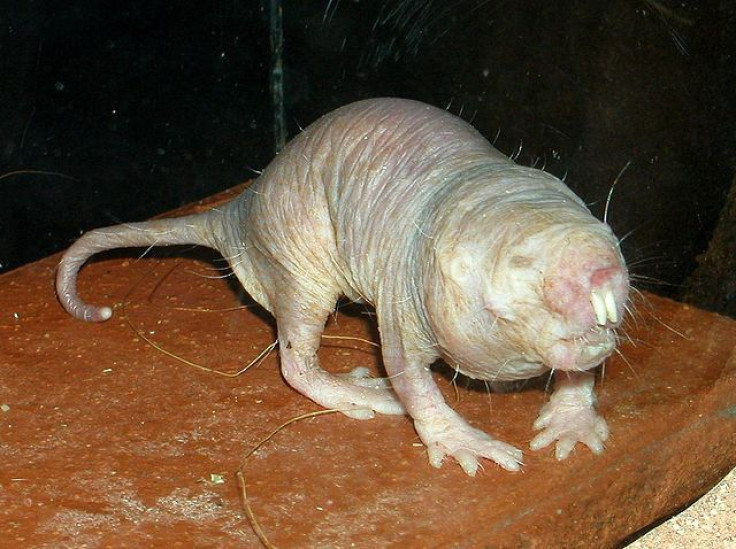Naked Mole Rats Could Hold the Key to Prolonging Life By 200 Years

Naked mole rats, the small, ugly hairless creatures, could help scientists find ways to stretch human life for about 200 years, according to reports.
The naked mole rat, Heterocephalus glaber, is found in some arid regions of Africa and lives mostly underground. It weighs about 35 grams and with a maximum lifespan of about 32 years, it is the longest living rodent in the world. Researchers from the Wellcome Trust Centre at Oxford University are trying to understand how the rats survive and use it to extend human life.
These rats are eusocial, meaning that they are like ants and termites, living in colonies where there is a caste system based on physiological features. But, their ranks aren't fixed in the colony and they can get a higher rank within the colony.
Naked mole rats are known to be cancer-resistant and can live under high carbon-dioxide conditions. They lack pain receptors and have poor vision and do not maintain stable body temperature.
Despite the seemingly bad hand nature dealt them, naked mole rats are survivors and could hold answers to prolonging human life.
Recent research has shown that they have low mutation rates and low levels of polymorphism. Naked mole rats are tolerant to low oxygen conditions or hypoxia. When compared to other mammals, naked more rats maintain brain function under low oxygen condition. Their ability to live under extreme condition and resistance to cancer, both natural and induced, has inspired researchers to study their genetic makeup closely.
Researchers now believe that by unlocking the mystery of naked-mole rat's long life they can find ways to extend human lives as well.
"Ageing is not a fixed thing. There is no hard limit on how long we can live. The fact that people die at 80 or 90 is not fixed," said Jonathan Flint from Oxford University's Wellcome Trust Centre, The Sun reports.
"We could theoretically go on for 200 years if we understood the biology pathways and could alter them in some way," Flint said to The Sun.
Another fascinating thing about these creatures is that they can live in regions where there is hardly any food or water. "It doesn't matter what you throw at them, they seem to cope," Rochelle Buffenstein, professor at the University of Texas, told The Sun.



























